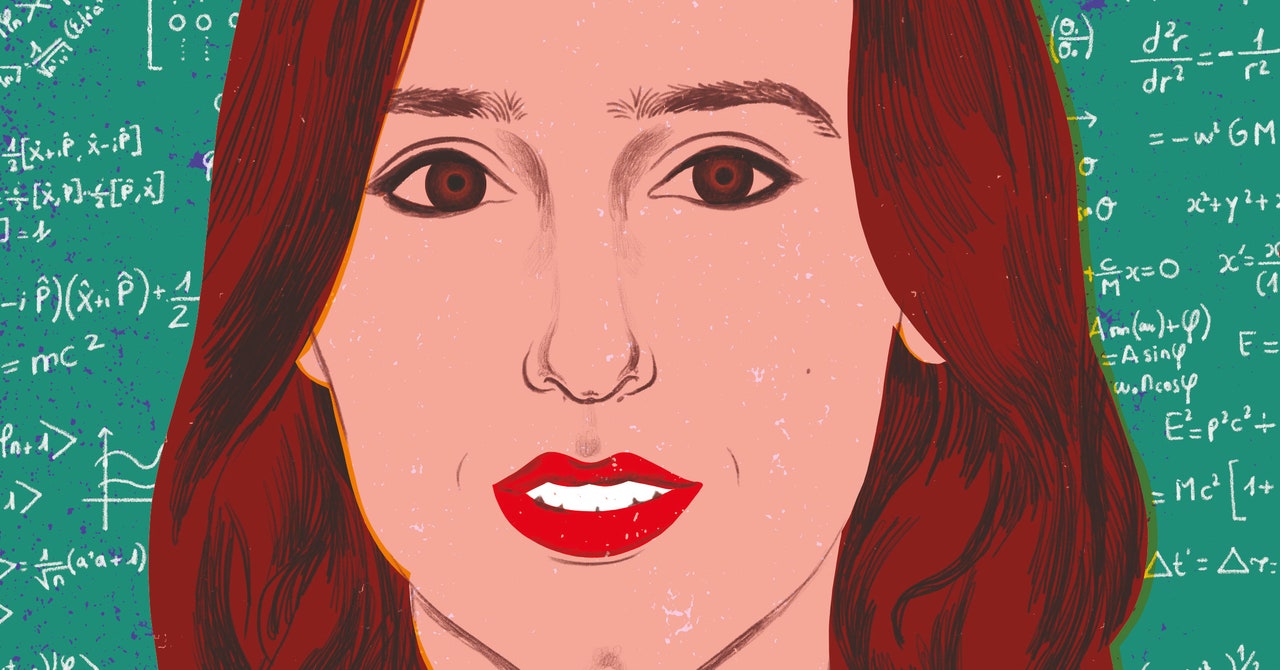
The universe is a hologram.
At least, that’s one of the central ideas in celestial holography, which is what Dr. Sabrina Gonzalez Pasterski works on. She’s the founder and principal investigator of the Celestial Holography Initiative at the Perimeter Institute.
Yes, you read that right: The universe might indeed be a hologram. Celestial holography explores the idea that our perception of reality is projected inward from some sort of wrapper around the universe. It’s a useful way to conceive of the universe when it comes to theoretical physics. “You want one framework that can describe both collisions at CERN as well as gravitational waves,” explains Dr. Pasterski.
Celestial holography allows physicists to reconcile quantum mechanics with general relativity, and it originates in the quantum physics of black holes. It’s a complex idea, to say the least, but here’s what’s important about it: Celestial holography is a larger way to discuss and think about the universe, across fields and perspectives. “It’s trying to apply insights from string theory and black hole information into real-world evidence,” says Dr. Pasterski.
Dr. Pasterski founded the Celestial Holography Initiative because it’s important to be able to bring different fields together under one larger umbrella. “You have these beautiful frameworks you wish could be simplified into one consistent framework,” she says. “And the Holy Grail is kind of trying to understand a theory of quantum gravity—is basically making that knowledge canon more condensed.”
The Celestial Holography Initiative became Dr. Pasterski’s pet project right after she was hired at the Perimeter Institute. That’s significant because Perimeter is one of the few places where theoretical physics is front and center. Dr. Pasterski also credits her colleagues and those who hired her with making sure the Celestial Holography Initiative happened.
But Sabrina Gonzalez Paterski didn’t always want to be a theoretical physicist. As a child, she became interested in aerospace, a passion her parents encouraged. When she was 9 years old, she started taking flight lessons. “I flew solo in my Cessna at 14,” she says.
As she went through school, however, she realized that aerospace wasn’t what called to her. “I went to MIT thinking I’m going to do aerospace engineering,” she says. “But I was kind of disappointed because everyone just wanted to play with drones.” Building a quadcopter didn’t exactly fire up her imagination, and she began to feel aerospace was a stagnant field.
“The thing that you can run into is that sometimes fields are really exciting, and then it becomes an engineering question where you don’t want to make a mistake,” she says. When people told her later that string theory was stagnant, she’d laugh and say, “You haven’t seen aerospace! It’s just getting around red tape!”
She was also worried about the strong personalities she’d have to deal with in aerospace. “I was always scared something bad would happen and these private equity guys would just kill the industry,” she says. “You really have to want to deal with that type of clientele,” she says—referring to the billionaires who currently dominate the landscape of rockets and spaceflight.
However, Dr. Pasterski still had to decide what to pursue as a career. She noticed that people she admired thought physics was interesting. “Sometimes you go into a field not just because you think it’s cool, but because the people you think are cool think it’s cool,” she said with a smile. She pursued her PhD at Harvard and joined Perimeter in 2021 after a postdoctoral fellowship at Princeton University.
The Perimeter Institute is different from many other organizations. It’s not a university or a government-run lab (which would have its own rules and regulations). Instead, it’s an independent nonprofit that focuses on research, training, and outreach for theoretical physics.
“At some universities, they’ll have really awesome string theory groups, but you would really not be the priority,” she says. “Especially when there are so many other practically relevant fields you could have—like connections to industry. People want to understand the fundamental laws of nature, but it’s not a priority.”
“At the Perimeter Institute, it’s all about theoretical physics,” she says. “You’re basically at a place where they care about the whole—the workflow, and then also interfacing with the public, and training.”
It has helped Dr. Pasterski expand the way she thinks about the universe and the questions she’s asking about celestial holography.
To Dr. Pasterski, the value of the Celestial Holography Initiative isn’t just in the physics. It’s about bringing disparate disciplines together. “That’s sometimes undervalued in our field because you always just want to do something new,” she said. “And then the problem with doing something new is that nobody understands you. You’re going to go down this rabbit hole, where only the people in your narrow framework understand the language you’re using to describe that physics.”
This gets at the beauty of the Celestial Holography Initiative at Perimeter, as well as the Simons Collaboration on Celestial Holography (a larger, more recent, international collaboration, of which Dr. Pasterski is the deputy director). The initiative allows people across different theoretical disciplines (from string theory to quantum gravity to mathematical physics) to communicate and collaborate. “You have a bunch of people who are seeing the same symmetry from different perspectives, joining forces. It’s a really natural collaboration but also super awesome because we aren’t trained in the same background,” she says.
That’s the key for Dr. Pasterski. “It gets complicated quickly trying to actually explain the physics,” she admits. “What I am into is this connection of different fields because I think that whenever you do math, that’s really what we do.”
